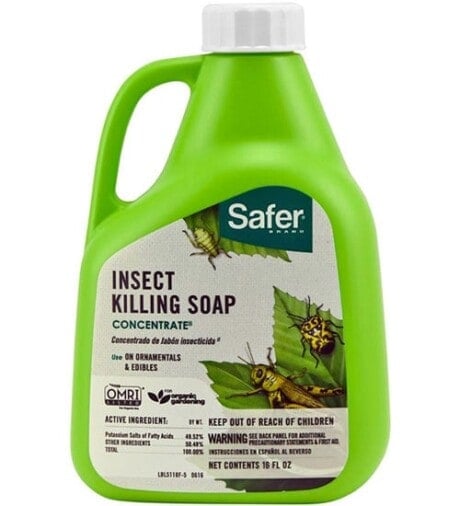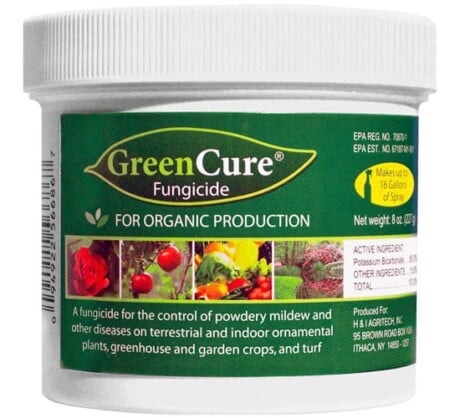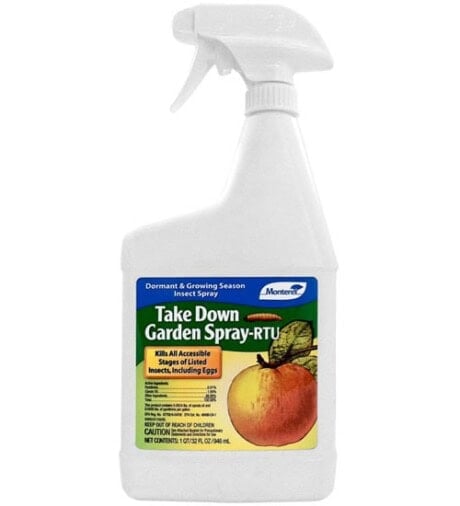Pests & Disease
A number of rose problems (insects, disease) can wreak havoc on your prized plants. We identify them here and list organic solutions for controlling them.
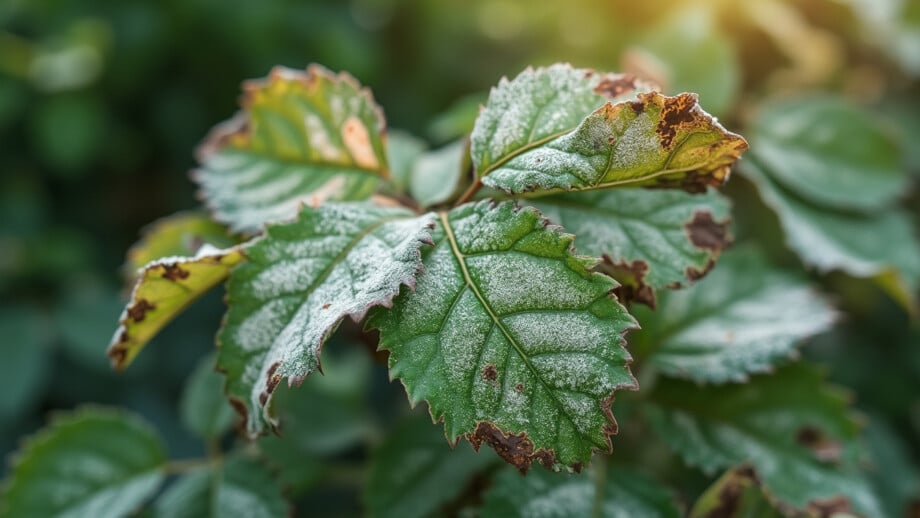
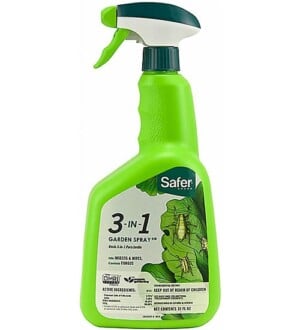
#1 Rose Spray
Available Here
3-in-1 Spray
Contains sulfur and insect killing soap derived from natural fats and plant oils.
Learn more“A thorn defends the rose, harming only those who would steal the blossom” – Chinese Proverb
You’re not the only one who loves roses. Pests and disease adore them as well. I don’t have the space (or the time!) to devote to each and every garden pest that may attack, but here I have listed several of the more common rose problems, as well as what to do about them. If you’re having difficulty diagnosing what the problem is, enlist the aid of your local agricultural extension agent or a friendly rosarian. You can also visit our Pest Problem Solver for pictures, descriptions and a complete list of earth-friendly remedies.
At Planet Natural we offer a large selection of organic pest control solutions that are guaranteed SAFE and effective. Got bugs? Visit our Pest Problem Solver for pest pictures, descriptions and a complete list of earth-friendly remedies.
Always start with the least harmful method of control and only “escalate” if you’re not getting results. Also, weigh the damage of the infestation against how much time and money you want to spend. Strive for a balance that will create the healthiest rose bushes at the lowest cost to you and the environment.
Finally, remember to keep a garden journal about your pest control adventures. Documenting what you’ve done, will help you monitor results and can help you learn what works and what doesn’t – given your plants, your garden and your local climate.
Insects
Spider Mites
 Common throughout the United States, many species of spider mites attack roses. Found in colonies, mostly on the undersides of leaves, they feed by piercing leaf tissue and sucking out the juices. Signs of mite infestation include yellowed, dry looking leaves with white feeding marks (small dots). Sometimes you’ll notice silvery webbing on the leaves and stems. Mites are tiny (1/50 inch) so you probably won’t see them — just the damage that they are causing. In extreme cases, your rose bushes will lose their leaves. Use neem oil or insecticidal soap to eradicate the mites.
Common throughout the United States, many species of spider mites attack roses. Found in colonies, mostly on the undersides of leaves, they feed by piercing leaf tissue and sucking out the juices. Signs of mite infestation include yellowed, dry looking leaves with white feeding marks (small dots). Sometimes you’ll notice silvery webbing on the leaves and stems. Mites are tiny (1/50 inch) so you probably won’t see them — just the damage that they are causing. In extreme cases, your rose bushes will lose their leaves. Use neem oil or insecticidal soap to eradicate the mites.
 Rose Bud Borers
Rose Bud Borers
There are actually two types of borers. Rose curculios are about 1/4 inch in size, bright red with black beaks. Rose leaf beetles are much smaller — about 1/8 inch — and are shiny blue or green. They both damage roses the same way: by boring into the flower buds and preventing the buds from blooming. The least invasive way to get rid of borers is to pick them by hand, as well as by removing and destroying infected buds. To reduce their numbers and prevent them from spreading to other plants, spray insecticidal soap mixed with pyrethrin.
Rose Chafers
 Commonly found east of the Rocky Mountains, these insects chew large, irregular holes in rose blossoms. Like the borers, the least-toxic solution is to hand pick rose chafers off your roses, but you can also try using a botanical insecticide to knock down their numbers. Just remember to add a little horticultural oil to the insecticide. That way it will stick to the leaves and not get washed away by rain or watering. The organic insecticides pyrethrum (made from chrysanthemum flowers) and rotenone are good choices.
Commonly found east of the Rocky Mountains, these insects chew large, irregular holes in rose blossoms. Like the borers, the least-toxic solution is to hand pick rose chafers off your roses, but you can also try using a botanical insecticide to knock down their numbers. Just remember to add a little horticultural oil to the insecticide. That way it will stick to the leaves and not get washed away by rain or watering. The organic insecticides pyrethrum (made from chrysanthemum flowers) and rotenone are good choices.
 Leafcutter Bees
Leafcutter Bees
As their name suggests, leafcutter bees (smaller and darker than a common honey bee) cut precise round or oval holes from the sides of plant leaves, which are used to form nest cells. In rose plants, more serious problems can occur when they bore into recently pruned stems and canes, causing wilt. To reduce damage caused by leafcutter bees, prune out the injured tips several inches below the damaged area and seal the cut with grating compound or some sort of sealing putty.
Japanese Beetles
 Found in most states east of the Mississippi River (and some isolated spots in California, Oregon, and Wisconsin), Japanese beetles (1/2 inch) are metallic green with copper-colored wing covers. Adults are very destructive and chew small holes in both the leaves and flowers of rose bushes. Often feeding in groups, the beetles will start on the upper part of a plant and work downward. If detected, apply milky spore to lawns to attack grubs (larvae) and spray organic insecticides as needed. Also, in the early morning or evening, when beetles are less active, shake them from plants onto tarps and drop them into a bucket of soapy water.
Found in most states east of the Mississippi River (and some isolated spots in California, Oregon, and Wisconsin), Japanese beetles (1/2 inch) are metallic green with copper-colored wing covers. Adults are very destructive and chew small holes in both the leaves and flowers of rose bushes. Often feeding in groups, the beetles will start on the upper part of a plant and work downward. If detected, apply milky spore to lawns to attack grubs (larvae) and spray organic insecticides as needed. Also, in the early morning or evening, when beetles are less active, shake them from plants onto tarps and drop them into a bucket of soapy water.

Disease
Most of the common rose diseases are fungal in nature. You can nip that problem in the bud by ensuring good air flow for your plants. That means providing plenty of room between roses, ideally five feet apart from each other. Overcrowding means excessive moisture and gives fungal spores the opportunity they’ve been waiting for.
 Botrytis
Botrytis
This fungal disease attacks rose leaves and canes, and may also prevent blooms from opening. Buds and flowers infected with botrytis will appear grayish-brown and shriveled. Surrounding areas may become covered with a fuzzy coating of fungal spores. Prune and destroy diseased plant parts. Apply micronized sulfur to prevent further damage, and provide plenty of air circulation. Also, be sure to keep the area under the plant clean to prevent reoccurrence. Roses under stress are highly susceptible to this fungal disease that can spread very quickly.
Powdery Mildew
 If the leaves of your rose plants look like they’ve been treated to an after-bath dousing of talcum powder, chances are they’ve fallen prey to powdery mildew. Severe infection will cause leaves to yellow or brown and can disfigured shoots and flowers. To reduce the chances of powdery mildew, be sure to keep the ground under rose bushes clean and try to increase air circulation. Water only in the morning hours to avoid moisture build up. To treat powdery mildew, try this home made remedy: 1 teaspoon baking soda, 1/2 teaspoon oil and one quart of warm water. Mix and then apply by spray bottle. Green Cure will also get rid of powdery mildew.
If the leaves of your rose plants look like they’ve been treated to an after-bath dousing of talcum powder, chances are they’ve fallen prey to powdery mildew. Severe infection will cause leaves to yellow or brown and can disfigured shoots and flowers. To reduce the chances of powdery mildew, be sure to keep the ground under rose bushes clean and try to increase air circulation. Water only in the morning hours to avoid moisture build up. To treat powdery mildew, try this home made remedy: 1 teaspoon baking soda, 1/2 teaspoon oil and one quart of warm water. Mix and then apply by spray bottle. Green Cure will also get rid of powdery mildew.
 Black Spot
Black Spot
A fungal disease that will cover your rose plants in…well, black spots! One of the most common plant diseases affecting roses, black spot can be difficult to control and may also increase the likelihood of winter injury. Spores lay dormant under rose plants throughout the winter and are spread to healthy leaves by splashing water. Infection most often occurs in areas of high humidity and rainfall. Like most fungal diseases, the key to getting rid of black spot is to keep the area under your roses as clean as possible. Remove and destroy any fallen debris or foliage and mulch often. Make sure your roses have proper air circulation and water from below, if at all possible. Apply organic fungicides, like sulfur on a weekly basis.
Canker
 Appearing as dead or discolored areas on rose canes, this fungal disease can enter healthy plants through pruning wounds and is spread by splashing water, insects and even dirty tools! If you suspect that your plants are infected with rose canker, do not fertilize or prune as this will stimulate new growth, which is most susceptible to this disease. As with other fungal diseases, keep your plants and the area around them clean and raked up. Get rid of infected plant parts as soon as possible. If necessary, apply copper-based fungicides to establish control.
Appearing as dead or discolored areas on rose canes, this fungal disease can enter healthy plants through pruning wounds and is spread by splashing water, insects and even dirty tools! If you suspect that your plants are infected with rose canker, do not fertilize or prune as this will stimulate new growth, which is most susceptible to this disease. As with other fungal diseases, keep your plants and the area around them clean and raked up. Get rid of infected plant parts as soon as possible. If necessary, apply copper-based fungicides to establish control.





